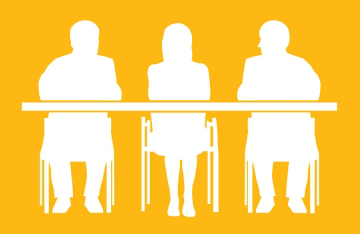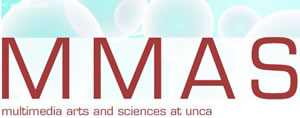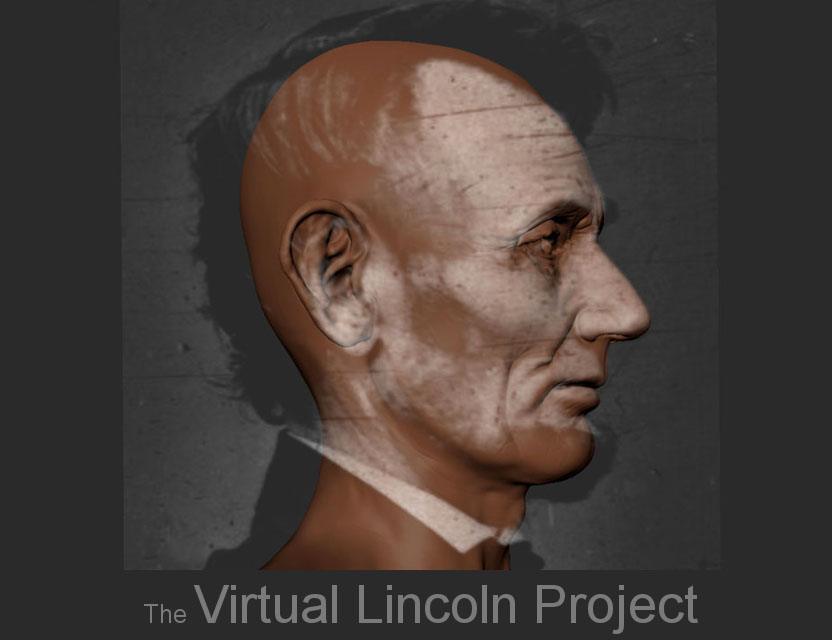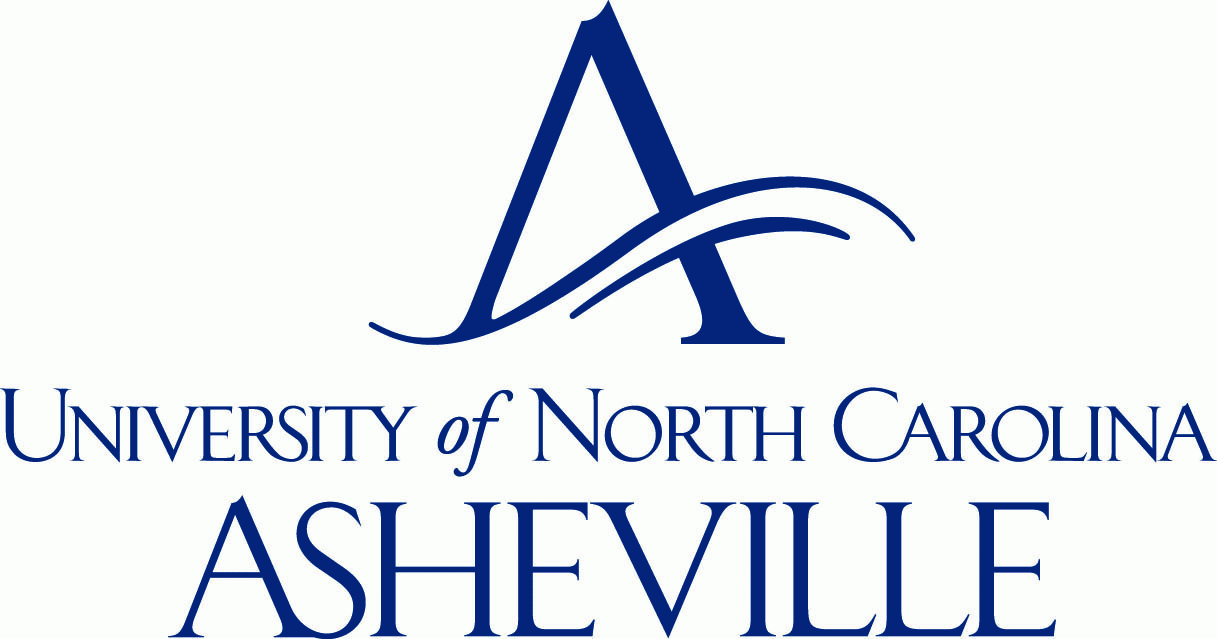Post-Mortems
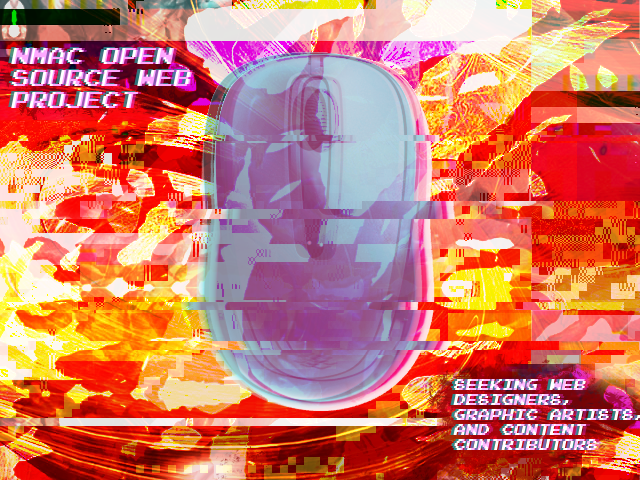
Web Team, 2016
Description: NewMAC sent out notice that we were looking to assemble a web team of interactive students that could design and develop a new student-run website. The idea was to create an undergraduate team project for interactive students, kind of like how the Virtual Lincoln project functions for animation majors. The development cycle would be long-term, providing students a chance to experiment with web languages and develop advanced web skills in areas not really covered in classes. A small team met a few weeks into the semester.
Analysis: At about the same time the under-construction NewMAC website was first announced, a separate web team of upper-level interactive majors had already assembled to try and finish work on a new website redesign for the New Media department. This website had already been under development for over two semesters. Even though the site architecture wasn't completely finished, the display layout looked well-designed. In comparison, NewMAC's website was still pretty rough. There were too many pages, lots of unformatted content, and major issues with a broken footer and bad scalability on browsers. Retrospectively it wasn't as ready to be put online as hoped.
There weren't really any major issues with the simultaneous website development projects competing against eachother. The Department website team members were very helpful by providing useful tips to the struggling NewMAC web project. However, the Department website team seemed to have a little more incentive with internship funding and faculty endorsement. Morale on the NMAC project was pretty low.
A major setback occurred when the website launch was delayed for over four weeks due to UNCA administration not responding to inquiries about hosting the website on the New Media server. All progress ground to a halt, and the web team kind of drifted apart around this time due to lack of communication or regular meetings. The remaining members continued making intermittent improvements to the content and planned mockups for an entire site redesign in WordPress. The semester was halfway over before UNCA sent word back about the server situation. The site was eventually posted online for feedback, still in a haphazard state. The buggy test launch didn't generate a ton of hype.
This was the first time NewMAC had ever attempted to get a student-run website running on the department server, so there were some novice problems that should have been avoided. Now that the initial technical barriers have been resolved, it should be much easier for New Media students to connect and be able to work on web-related projects.

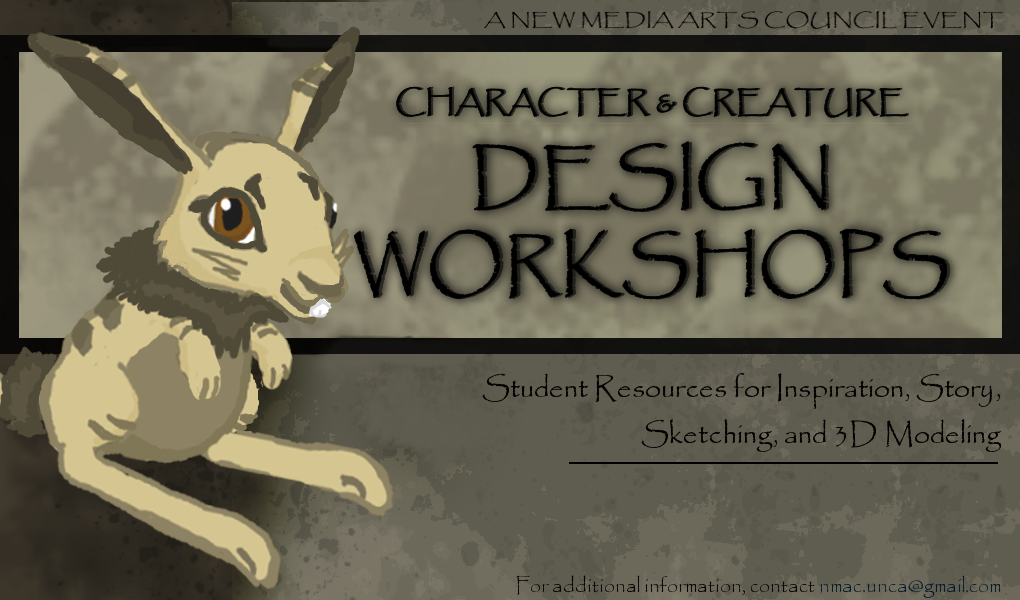
Character/Creature Design/3D Printing Workshops, 2014, 2015
Description: This was a workshop series intended to explore aspects of character design, a subject not really covered in the NM curriculum. Students could share resources and get constructive feedback and tips, with the goal of developing a work in progress into a portfolio-ready finished product. Resources could be provided for drawing, sculpting, 3D modeling, and 3D Printing.
Analysis: The workshop series failed due to poor word of mouth advertising and apparent lack of appeal. The idea was pitched as a weekly, bi-weekly, or monthly event, but it became evident that the few people who initially expressed interest were too busy to attend recurring meetings. A second attempt to hold a single workshop didn't go so well either when only one person showed up. That kind of put the nail in the coffin. Maybe better drawn posters would have helped generate a little more interest.


2D Animation Project, 2014
Description: A 2D animation project was proposed a few years ago, but things sadly didn't work out. The problem seemed to boil down to lack of enough interest, no poster advertisements, and the fact that drawing and 2D animation isn't given much emphasis in the 3D animation-oriented curriculum.
Analysis: The New Media department demographic is split into a lot of different sub-interest areas, and this makes it hard to find people on campus with similar interests. 2D animation isn't the only area that has this problem. The best advice to anyone attempting to start a group project is that there are opportunities to team up with other artists online if you can't find enough people at UNCA to collaborate with.

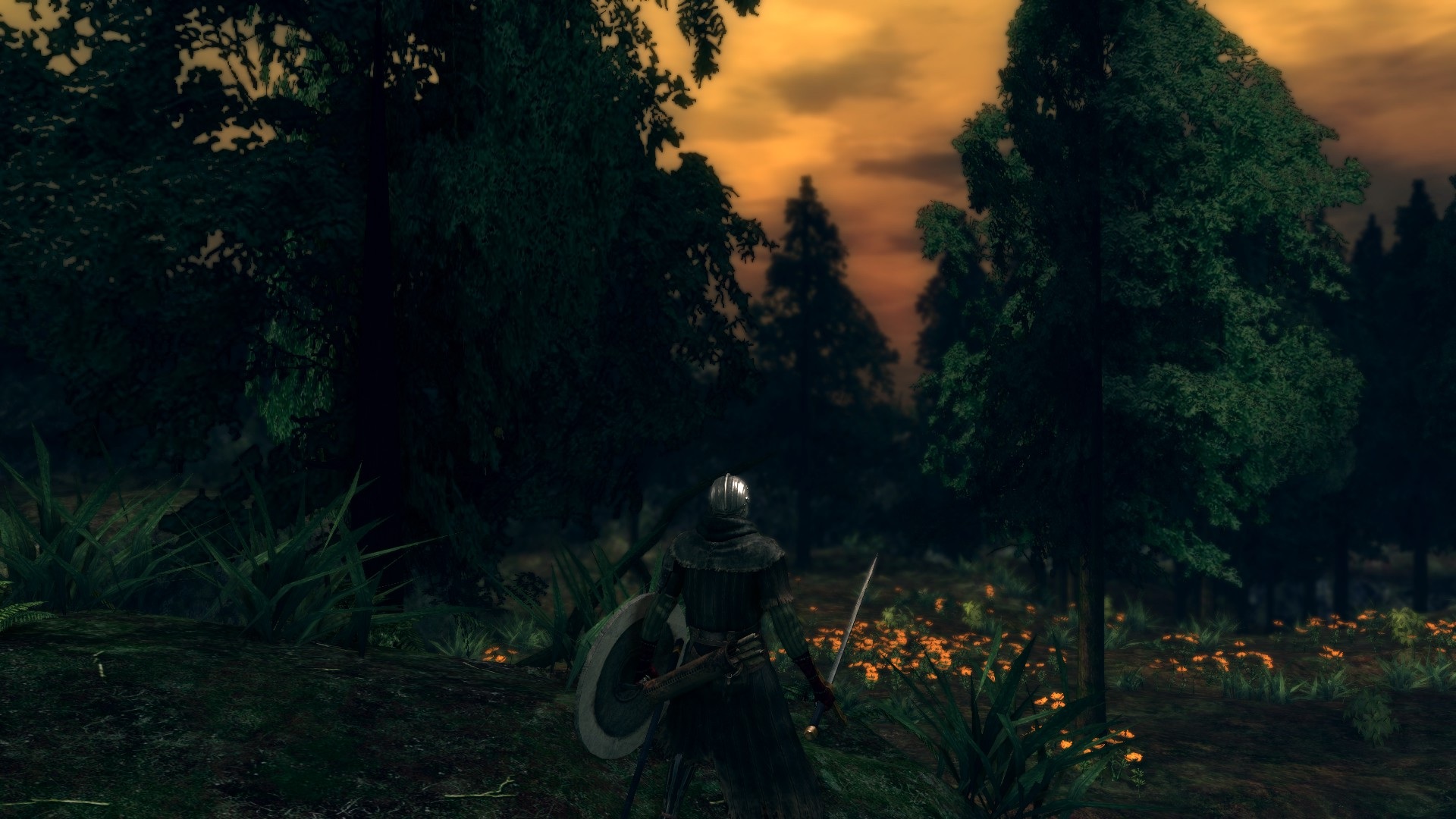
Game Design Group, 2015
Description: This project was a collaboration effort between New Media students and Computer Science majors. The concept was to create a rogue-like survival game merging the open-world exploration of Skyrim with the difficulty of Dark Souls set in a fantasy Scottish lanscape. A flexible day night cycle would be a major component of the gameplay. Emphasis was put on everyone getting to have creative freedom over how much they contributed.
Analysis: The project suffered a few problems despite having better organization than most team projects typically start out with.
Problem 1: The concept was interesting and people were enthusiastic about working on the project, but the scope was way too ambitious for a first time project. The New Media half of the team could never hope to model even a portion of the number of highly detailed character and building assets required to populate the game, let alone attempt to texture, rig, and animate in a game engine that only a few team members had much experience with. It would take an entire art department to design and model villages, castle ruins, and wild animals.
Problem 2: The lack of any art direction was a major barrier to making progress. Even though the core team team had met several times over the course of two semesters, the only visual information the team had to work with was the procedurally generated landscape modeled by the project founder. The landscape looked really great, but it was essentially just terrain tiles with very realistic looking mountains. There weren't any definite characters, names, factions, locations, or a clear plot. This didn't provide enough information for artists to begin modeling assets. Pre-planning concept art, a script, and a game design document would have cleared up a lot of questions early on.
Problem 3: Everyone having equal say in the project allowed for a flexible development cycle, but the result was that nobody really wanted to step up to take charge and establish clear direction and deadlines. Even with stretch goals, a github account, and an alternating scrum master organization structure, the slow progress towards deciding on project goals prolonged getting enough done early on. A rough proof of concept could have attracted more project members. Trying to bring in new members without having anything to show besides the landscape models probably didn't provide enough incentive for other team members to commit to putting in the hours to move development forward. Communication issues eventually led to the project stalling out.

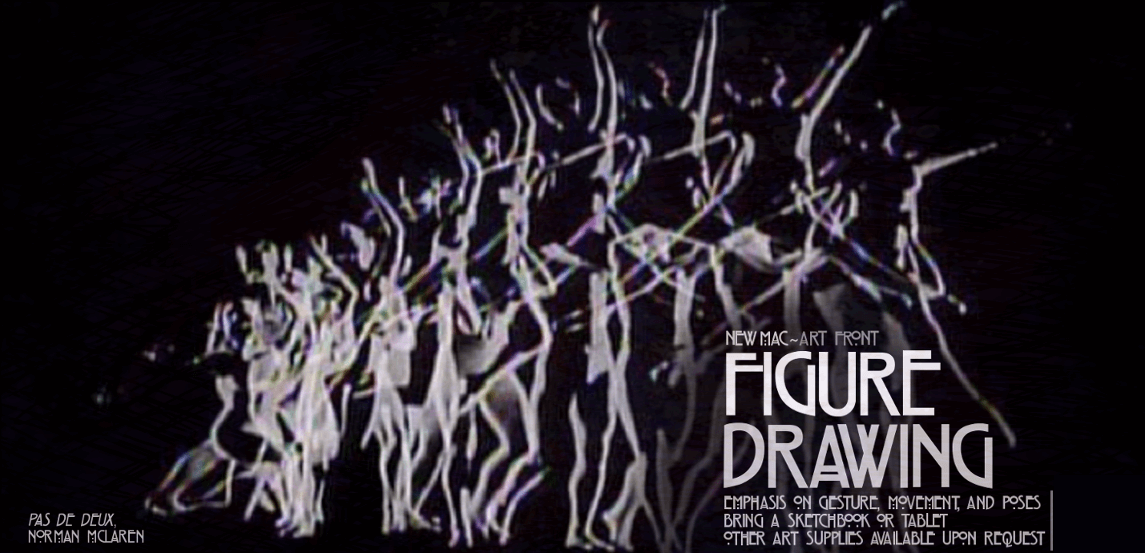
Figure Drawing Sessions, 2014-2015
Description: These workshops would be free with basic art supplies provided if needed, and the models would be clothed volunteers doing short 3-5 minute action poses. Snacks could possibly be provided. ArtFront has offered to co-sponsor the event by providing additional funds and assistance finding professional models if necessary, and Prof. Adam Bryant also offered to share his knowledge of drawing resources. Additional people to possibly contact on campus are Prof. Christopher Oakley, Prof. Tamie Beldue from the Art Department and Prof. Igor Roussanoff from the Drama Department.
Analysis: Adam Bryant tried to start this as a way to help students improve drawing skills. Drawing is a fundamental skill to have and it is kind of unreasonable that a course isn't included in the New Media curriculum for 2D animation, storyboarding, and graphic design. There seemed to be a fair amount of student interest, but the meeting time conflicted with Humanities class schedules and not many people showed up. NewMAC later attempted to revive the idea and talked to students in the art department to try and see if there was enough student interest, but we ran into the same problem of not being able to find a regular meeting time or location that worked for people. It would have taken a lot of effort to set up, and there didn't appear to be as much interest as we'd hoped for.

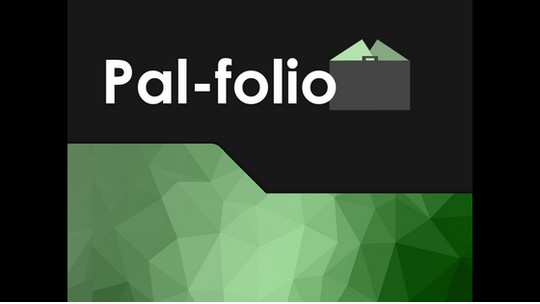
Pal-folio: A Project Collaboration Website, 2015
Description: If a collaboration website could be established for artists, it would allow animators, musicians, designers, and videographers to help out other creative people cover the areas they don't specialize in. For example, an animator who can model things well but isn't good at texturing or sound design could request help from other people who are skilled in those areas, and in return the animator could help those people out on their projects.
Analysis: Despite the relevance to New Media, this kickstarter campaign didn't get as much love as it deserved. The miscalculation was probably that there wasn't enough advertising or gathering feedback to see how many people would support the idea before launching the kickstarter. It also might not have found the right target audience on the New Media Facebook page. Asking a group of broke college students for substantial monetary donations doesn't tend to produce over 30k in funding. Asking a larger audience or businesses and successful artists who have benefited from collaborations before might have worked out better.
While students could definitely benefit from a collaboration system, it remains to be seen how many students or professionals have the time to work pro-bono on other projects when they often have their own deadlines to try and meet. Setting up a way for people to connect to more artists with similar interests is a good first step, but a solid network needs to be established before there will ever be a large enough number of collaborators to sustain a web community over time. This case would work out better starting small and building up reliable services over the course of several years.

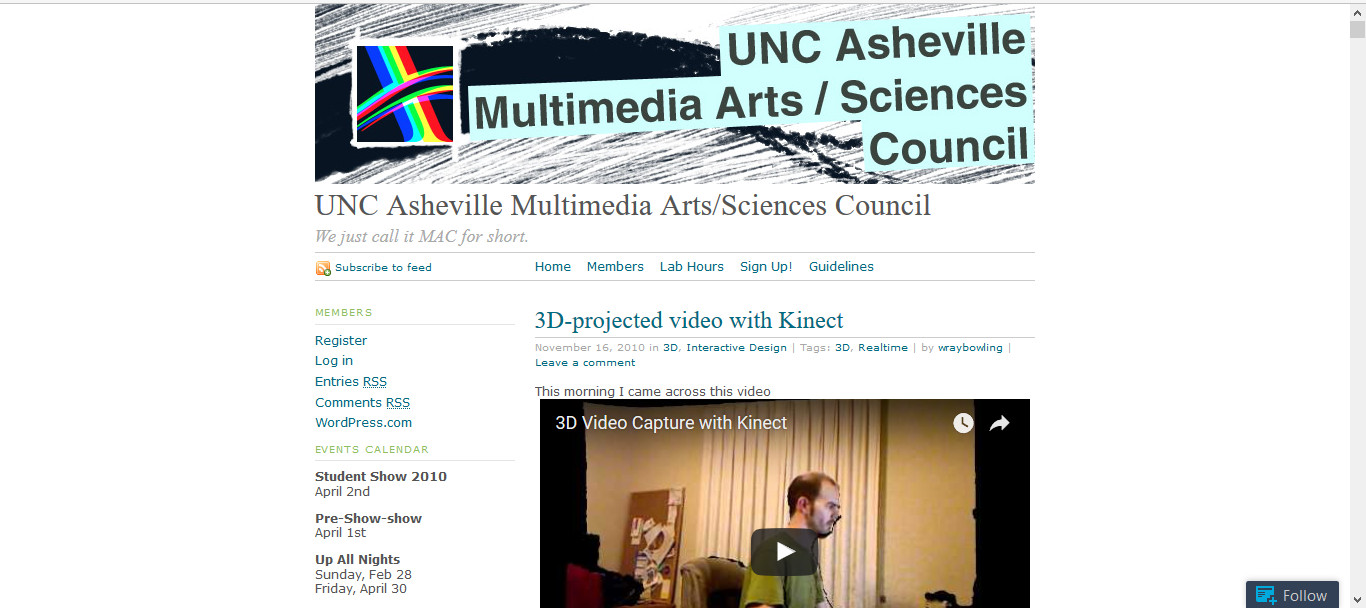
Multimedia Arts/Sciences Council Web blog, Dec. 2008- 2010
Description: This web blog lasted about two years, which is a fairly decent run. There were a good number of posts. The blog was apparently retired due to dwindling returns on the amount of energy put into keeping it running. A student-run website isn't able to compete with sites like Facebook, Twitter, or Netflix, and people are so busy all the time that a college blog at a small university doesn't stand much of a chance of being read by anyone.
Analysis: Unfortunately, six years later the content hasn't aged so well. The MMAS program seems to have focused a lot more on technical computer programming, but the interests of New Media students in 2016 seem to have skewed away from computer science and more towards art and design applications. There's still some computer science majors around, so the blog could potentially be revived if we knew the password. Without more volunteers, members would still probably face the same issues with keeping it updated.




